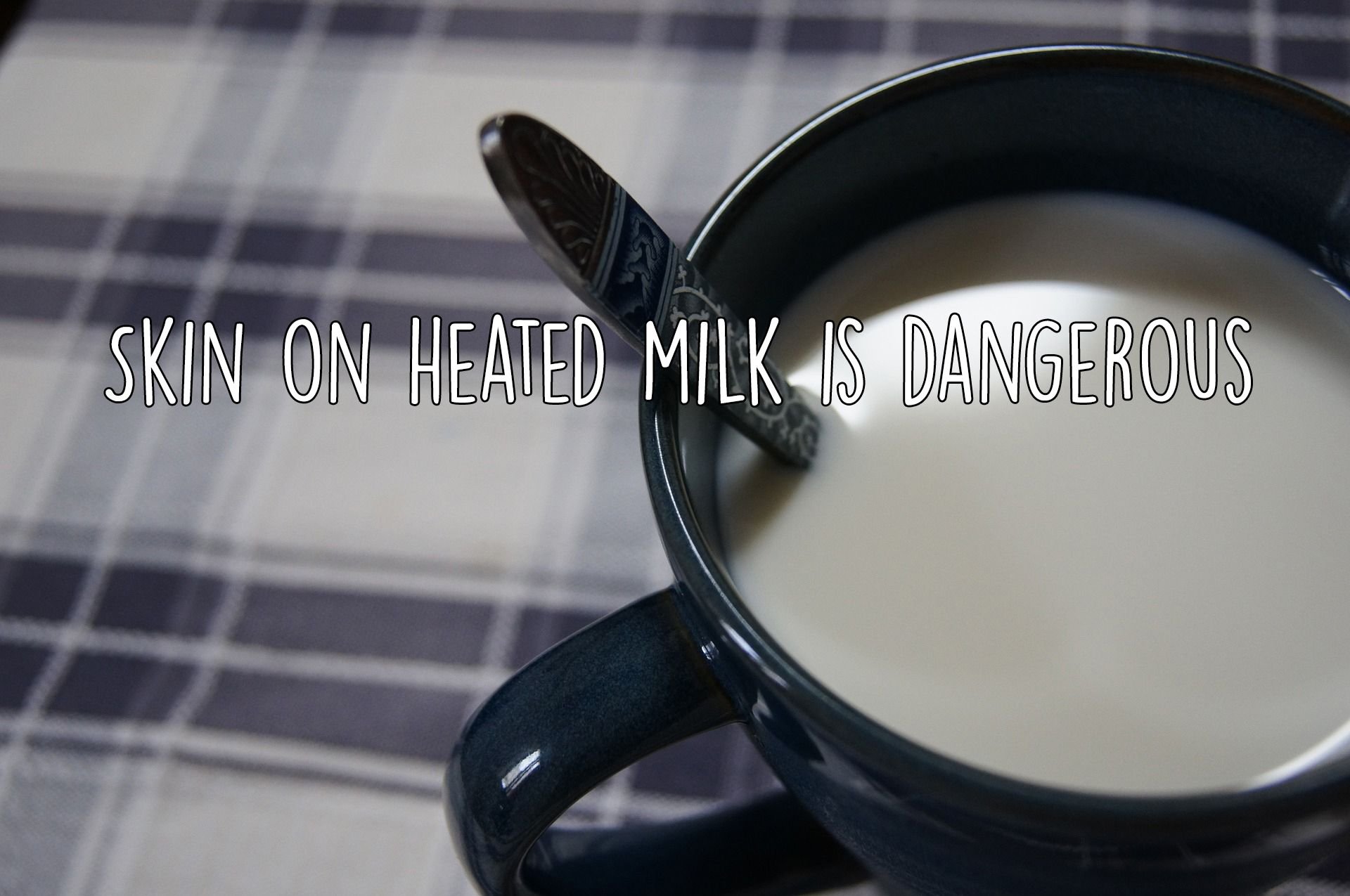
I was a young boy when my mother told me something that would haunt me for years. Before going to bed I loved to drink a glass of warm milk. Usually my mother prepared the milk for me but one day I wanted to do it on my own. I was 10 and had no idea how to cook (shame on me).
So what happened was that the milk cooked too long and a weird skin appeared on the top. Not knowing what happened I asked my mother and she told me to remove the skin since it’s bad and dangerous to me.
Years later I understand what happened back then. Do you? Is it true or false? A myth or fact? We will find out my friends!
What is milk?
Milk serves as the primary nourishment for infant mammals. It is an emulsion (colloidal dispersion) which consists of proteins, vitamins, carbohydrates, milk-fat and water (~87%). The greatest part of proteins in milk takes casein with almost 80%, the other 20% are referred to as whey proteins.
Further more we have some important carbohydrates such as glucose and lactose.
Did you ever wonder why a raw egg turns into a fried egg when heated? Or better say: why it turns from almost liquid into kinda solid? Let me tell you!
They solution lies within the proteins
Proteins are big molecules (polypeptides) which consists many amino acids. I personally love proteins! Big muscles and stuff...Okay, just kidding! But I really love proteins because they are so wonderfully build!
We have four different layers of structure for the proteins.

Fig.1 (from top) Primary, secondary, tertiary and quaternary protein structure Source
The first layer is the sequence of amino acids. They basically build a chain of amino acids. The so called primary structure.
The secondary structure of proteins are either alpha helix or the pleated sheet pattern (note that there are few other pattern we will not include here). The hydrogen bonding of the peptide backbone cause the above described pattern.
The tertiary protein structure is three-dimensional folding of the amio acid chain. This means that if you have a long chain of different secondary pattern, due to sidechain interactions they will put into a tertiary structured protein.
The last structure is the quaternary protein structure which consists of more than one amino acid chain.
As you can see proteins are very well structured and organized. What a pity that heat destroys this structure!
Denaturation
As described above our proteins have a complex structure. Heat is one of the main reasons why proteins denature. What happens is that the proteins losses its second and third structure. Imagine the heat as energy that let the molecule swing. The hotter it gets the more they move until they lose their structure. However the energy is not great enough to break the covalent bonds. This is the reason why proteins still keep their primary structure. Biologically the protein loses its function.
The below pictures depicts what happens with a protein when it denatures.

Fig.2 1. Protein in quaternary structure 2. Heat is applied 3. Protein in primary structure Source
So the skin on my milk is denatured proteins? Right! You can still drink your milk and it wont harm you. Everything is totally fine.
By the way: the skin appears because the denaturated proteins build threads that move upwards.
Tim
